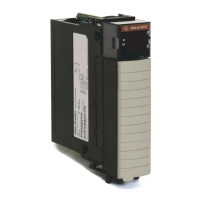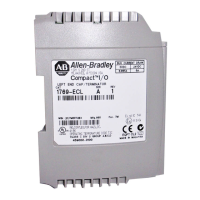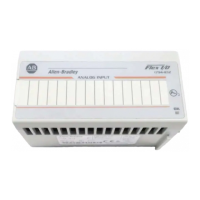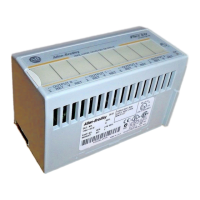22 Rockwell Automation Publication 1756-UM540E-EN-P - December 2017
Chapter 2 Analog I/O Module Features
Common Analog I/O Features
The ControlLogix analog I/O modules have the following features:
• CIP Sync Timestamp of Data
• Rolling Timestamp of Data
• Floating Point Data Format
• Module Quality Reporting
• Calibration
• Fault and Status Reporting
• Configurable Software
• Latching of Alarms
• Module Inhibiting
• Electronic Keying
• Elegant Migration Emulation Mode
CIP Sync Timestamp of Data
The control system uses a 64-bit system clock. The modules support CIP Sync
timestamping by using the 1588 protocol passed throughout the system. The
1588 protocol is defined in the IEEE 1588-2002 standard, publication Standard
for a Precision Clock Synchronization Protocol for Networked Measurement
and Control Systems.
Each input channel scan or new output application is stamped with a CIP Sync
timestamp and one timestamp is returned to the controller for the module with
the input data transfer.
You can use this feature for the following:
• To identify the sequence of events in fault conditions or during normal
operation.
It is possible to use the system clock between multiple modules in the same
chassis or throughout a system in which a common Time Master is used.
• To measure the change between samples–which correlates closely with the
RPI if no samples are missed in the logic–and to detect when a new sample
is available for processing via the logic.
You can also use the 1588 Protocol to synchronize sampling for modules across
the entire system. By using the Synchronized Sampling feature, described in detail
on page 52
and page 74, you can configure multiple modules to coordinate their
input samples precisely with each other when using the same RPI.

